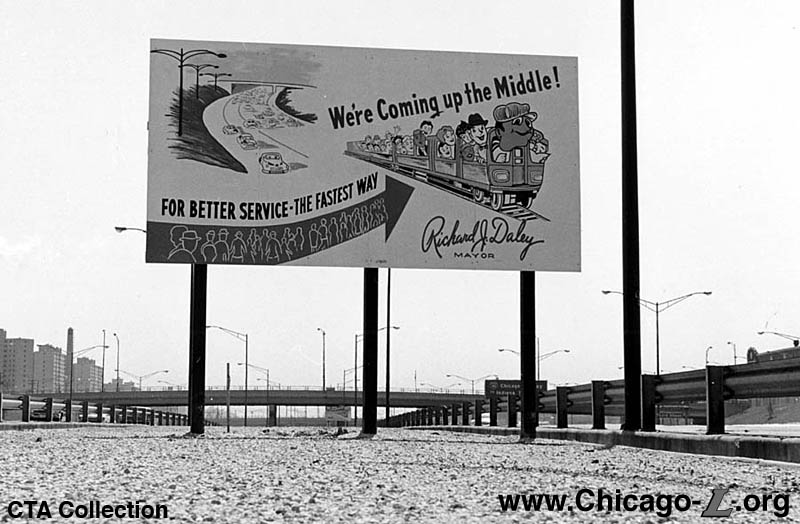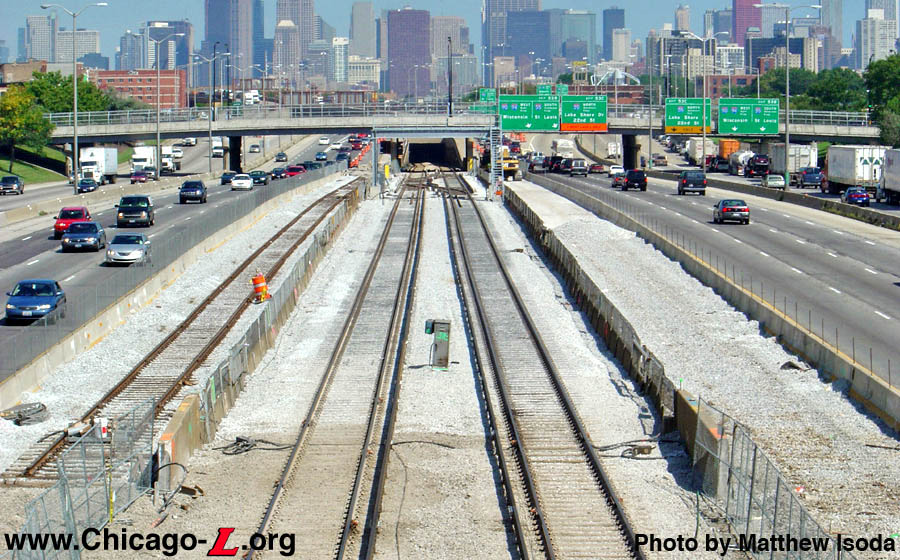RedRocket191
Senior Member
From Today's Toronto Star:
Pros:
Cons:
Flaws:
Buy a ticket to ride - on the 401
One lobby group says there's a simple, cost-effective way of building a commuter rail line through our busiest highway. There's no shortage of critics who say it's a pipe dream
May 24, 2008
DANIEL GIRARD
TESS KALINOWSKI
TRANSPORTATION REPORTERS
Imagine you're among the nearly 450,000 drivers idling on Highway 401 through the Toronto area on a typical weekday, bumper-to-bumper traffic burning a $1.27-a-litre hole in your pocket and the ozone.
Now, fast forward just over a decade, when gridlock and gas prices are expected to make 2008 look like the good old days, and you glance from your car to see a high-speed, electric train stop in the middle of the 401. Hundreds of waiting passengers file aboard, open their papers and laptops and speed off.
Before you've passed the next exit, they're halfway to work.
No one disputes that something must be done to ease the traffic congestion choking Highway 401 across the top of Toronto.
It's bad for the environment and the economy, to say nothing of the physical and mental toll on drivers.
But now a group of sustainability advocates is pushing a radical solution to get the 401 moving again.
The idea – eliminating one lane of traffic in each direction to put subway-style rail down the middle of the highway – may be counter-intuitive.
It's certainly ambitious – 51 kilometres and 28 new stations from Pickering through Pearson International Airport to Mississauga. It's time-consuming – 12 years to complete. And, it's costly – $5.9 billion.
But, the Sustainable Urban Development Association, or SUDA, believes we can no longer afford to ignore the need for a car alternative to east-west travel across the GTA.
"The need for sustainable transportation is expanding dramatically," said John Stillich, general manager of SUDA, a charitable organization devoted to environmentally sensitive city building. "Climate shifts are happening faster than people previously thought, energy prices are hitting the fan.
"It's gotta happen."
There's no shortage of critics lining up to say it cannot happen. They argue it's too costly, the 401 is already too congested to reduce lanes and that getting people in and out of stations in the middle of a highway will prove difficult to impossible.
And, despite ever-worsening gridlock, critics are not even convinced there's enough demand for public transit there.
Stillich, a former senior financial analyst with the province, first floated the idea of a 401RT more than a decade ago. While applauding the $11.5 billion Queen's Park pledged last year for public transit projects across the GTA and Hamilton by 2020, he said they won't keep up with growth in road travel.
An essential component of cutting congestion and pollution across the GTA is an east-west transit line across its middle – Highway 401.
The SUDA concept would see trains stop at stations typically located on bridges and underpasses, which are wide enough for buses to drop off passengers without the need for expensive bus terminals. From one end in Pickering to the other in Mississauga would take about 75 minutes, with travel to Yonge St. from 35 to 40 minutes either way.
"If we don't do it now, we're going to have greater hardship for everybody in the GTA," Stillich said, forecasting 150 million riders a year on a line that would cost $304 million to operate. "Things will get worse."
Stillich is hoping Metrolinx, the body developing a comprehensive transportation plan for the region, will include the 401RT as part of its draft due out this summer.
Though there's an obvious sticker shock that comes with a $5.9 billion tab, when broken down over its 12-year construction period and with the expected federal and provincial support that comes with major infrastructure projects, the average annual cost per income taxpayer in Toronto, Peel and Durham comes in at $60, Stillich said. With the price for gas and other driving expenses climbing, he's sure people will see trading in their wheels for rails as a bargain.
"It's only high cost in terms of the dollar amounts that people have to spend to put the thing together," he said. "But if you look at the resultant impact on households of that initial investment, it's cheaper than business as usual by a long shot."
To back up its argument, SUDA used part of a $76,000 Ontario Trillium Foundation grant to survey households across the GTA. It found more than two-thirds of respondents willing to pay more to improve public transit.
That's in line with an Ipsos Reid survey of 1,000 residents of the GTA and Hamilton done last fall for Metrolinx. It found two-thirds believe increasing public transit is the best way to improve the traffic situation, compared with one-third calling for more roads.
Metrolinx also has its eye on public transit across the 401. But it envisions an express bus corridor using high-occupancy vehicle lanes.
Stillich, who is looking for a "political champion" to push the 401RT concept, admits SUDA's pitch needs more thorough analysis through a feasibility study.
But a huge hurdle with a 401RT is access, said Toronto transit activist Steve Munro. With trains running down the middle of the highway it would be next to impossible to get passengers into stations without large – and expensive – bus interchanges, parking lots or tunnels.
Also, the sprawl-oriented development across the 905 region "is not suited to transit," unlike the concentrated areas of Toronto serviced by the subway. Add to that the fact that few people have a final destination on the 401 and a rail line proves "superficially seductive" but impractical, Munro said.
"The idea that somehow we are going to solve regional transportation problems by putting an express line on the 401 sounds nice in theory, but how the hell do you get people to it?" said Munro.
SUDA's concept includes a massive network of buses, much like those that will feed Toronto's seven planned Transit City light rail lines.
But unlike Transit City, which is supposed to extend light rail into the recesses of suburban Toronto, the 401RT concept doesn't have the same city-building potential, argues TTC chair Adam Giambrone.
He espouses the power of light rail to transform neighbourhoods by contributing to higher densities of housing and jobs, building pedestrian traffic that makes for lively neighbourhoods.
"Those cars were fed to that (highway) corridor," he said. "They came in on streets. The goal here is to make transit accessible by pedestrian measures so you can walk. If you have (transit) in a corridor like the 401 series highways or a hydro corridor, that becomes very difficult."
It can be done. It is done. The TTC buses people to subways and expects to feed the Transit City lines with buses as well. It's just not the preferred option, said Giambrone.
"You would miss all the walk-on traffic and all the streetscape possibilities," he said.
You could do it but it would be a bad substitute for the kind of more localized higher order transit corridors he believes will succeed under Metrolinx.
From an environmental perspective, it already may be too late to change direction for something as radical as a 401RT, says Pollution Probe's climate change program director.
Anything that gets people out of their cars is good, but given the time constraints, building on the existing transit network might be more practical, according to senior scientist Quentin Chiotti. "We basically have 10 to 15 years for the globe to turn around their whole emissions of greenhouse gases. If this doesn't happen we're in serious trouble. Twelve years (to build the RT) may be beginning to fall into that window, but just how much will that give us, given the investment?" he said. "Are there other ways of spending that $6 billion that's going to give us more bang for the buck?"
In the Toronto region, freight has priority when it comes to the rails, said Chiotti.
"Can't we do something about who has priority over the rail system? We have a system that is supposed to get people moving through the GTA but the system has a lot of barriers to operating as efficiently as possible," he said.
"Instead of saying we should give transit a high priority, I think we need to look at the whole rail system and improve that so we have more dedicated lines for people movement and freight."
What's needed more than anything, Stillich said, is public understanding of all costs involved in the 401RT project. While people may wince at a $5.9 billion pricetag and losing a lane of highway traffic each way, he said they're not aware of the true toll on the environment and economy of taking "inadequate and incremental steps" rather than embracing his "dramatic change" now.
"If things get so bad that everything is jammed every day, there'll be more and more screaming that, no, we can't do this construction and lose another lane because nothing will move," Stillich said. "Something has to be done now to avoid the worst-case scenario.
"And, if you don't do this, or this kind of thing, then nothing is going to move on the 401 anyway."
Pros:
- Serves as an uptown-airport link, and can be connected to the Sheppard subway to complete its original intention: Yonge to STC.
- Serves as a connection between the inner suburbs (Mississauga City Centre and Pickering Town Centre) and employment areas in uptown Toronto, a link that is currently lacking.
- Can make it economical for companies to build buildings over highway onramps, something that has been done in San Francisco.
- Would have public support - people who use the 401 would see that their travel patterns are being addressed.
Cons:
- Very little pedestrian potential - the line would be almost completely dependent on feeder buses in Toronto or Park-and-Rides in the outer ends.
- High cost, but everything has a high cost these days.
Flaws:
- The lobby group claims that this would eliminate the need for local transit improvements on Sheppard and Finch. I don't buy this, as we need to improve local capacity and reliability on these corridors.







